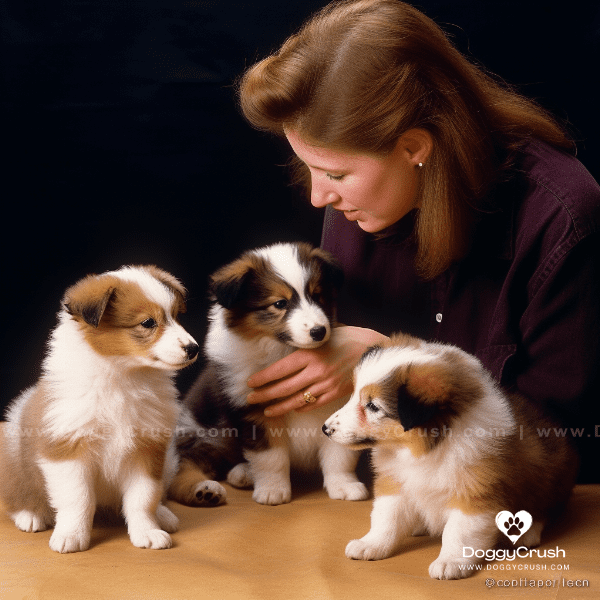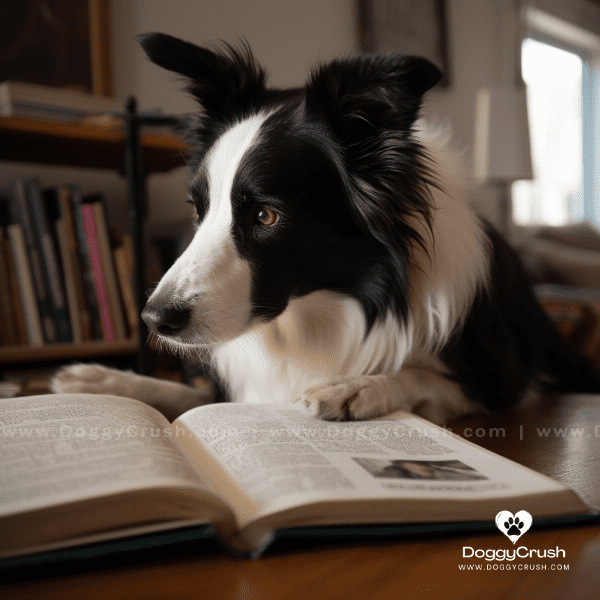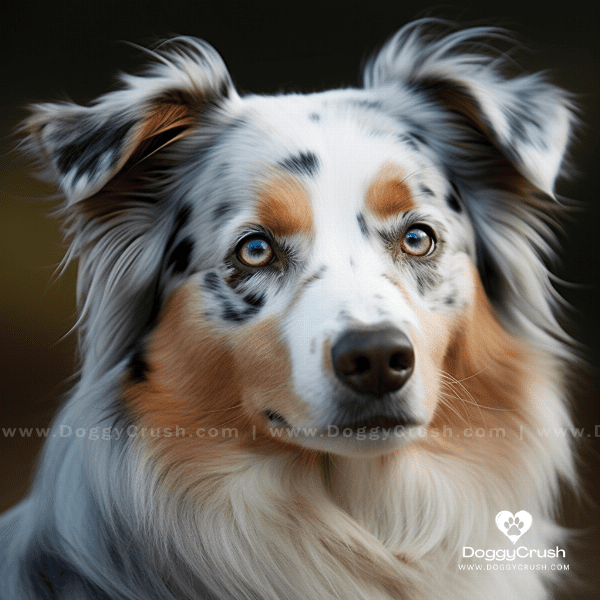Table of Contents
- “History of the Shetland Sheepdog Breed”
- “Appearance and Characteristics of Shetland Sheepdogs”
- “Temperament and Personality Traits of Shetland Sheepdogs”
- “Training and Exercise Needs of Shetland Sheepdogs”
- “Common Health Issues in Shetland Sheepdogs”
- “Grooming and Coat Care for Shetland Sheepdogs”
- “Living with a Shetland Sheepdog: What to Expect”
- “Shetland Sheepdogs as Family Pets”
- “Shetland Sheepdogs in Show and Performance”
- “Finding and Choosing a Shetland Sheepdog Puppy or Rescue Dog”
History of the Shetland Sheepdog Breed
The Shetland Sheepdog, also known as the Sheltie, is a small to medium-sized herding dog breed that originated in the Shetland Islands of Scotland. The breed was developed from several different herding breeds, including the Spitz-type dogs that were brought over to the Shetland Islands by Viking settlers.
Early Development
The exact origin of the Shetland Sheepdog is not known, but it is believed that the breed was developed in the 18th century. The early Shelties were known for their ability to herd sheep and other livestock in the harsh and rugged terrain of the Shetland Islands. They were highly valued by local farmers for their intelligence, loyalty, and versatility.
Breed Standardization
In the early 20th century, the Shetland Sheepdog was brought to England, where it quickly gained popularity as a show dog. The breed was first recognized by the Kennel Club in 1909, and the first breed standard was established in 1914. Over the years, the breed has been refined and developed to meet the standards of the show ring, but it still retains its herding instincts and abilities.
Popularity and Spread
Today, the Shetland Sheepdog is a popular breed around the world. It is valued not only for its herding abilities but also for its intelligence, loyalty, and affectionate nature. The breed has been used in a variety of roles, including as search and rescue dogs, therapy dogs, and even as guide dogs for the visually impaired.
In conclusion, the history of the Shetland Sheepdog is a fascinating tale of a hard-working and versatile breed that has adapted to changing circumstances over the years. From its humble beginnings as a herding dog in the rugged terrain of the Shetland Islands to its current status as a beloved companion and show dog, the Sheltie has proved itself to be a breed of great intelligence, loyalty, and adaptability.
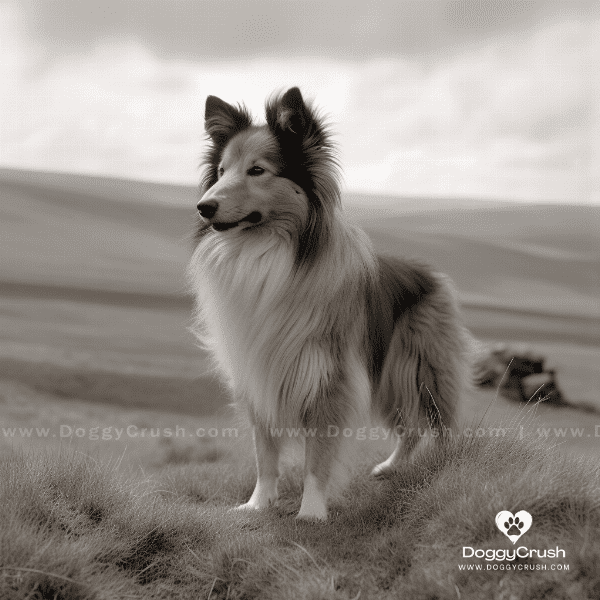
Appearance and Characteristics of Shetland Sheepdogs
Shetland Sheepdogs are a small to medium-sized breed, with males typically weighing between 14-27 pounds and females weighing between 12-25 pounds. They have a long and graceful neck, a lean body, and a wedge-shaped head with a pointed muzzle. Their ears are small and erect, and their eyes are almond-shaped and dark in color.
Coat
One of the most distinctive features of the Shetland Sheepdog is its beautiful coat. The breed has a double coat, with a long, straight, and harsh outer coat that is water-resistant and a soft and dense undercoat that provides insulation. The coat comes in a variety of colors, including sable, black, and blue merle, with white markings.
Temperament
Shetland Sheepdogs are known for their intelligence, loyalty, and affectionate nature. They are highly trainable and excel in obedience and agility competitions. They are also great family pets and are known for their gentle and patient nature with children. However, they can be reserved or aloof with strangers and have a strong herding instinct, which can sometimes manifest in nipping or herding behavior.
Exercise Needs
While Shetland Sheepdogs are small, they are an active breed that requires regular exercise and mental stimulation. Daily walks and playtime in a securely fenced yard are recommended to keep them physically and mentally healthy. They also enjoy playing games like fetch and agility training.
Health
In conclusion, the Shetland Sheepdog is a beautiful and intelligent breed with a distinctive coat and an affectionate nature. They are a great choice for families and individuals who are looking for an active and trainable companion. However, it is important to remember that they do have a strong herding instinct and require regular exercise and mental stimulation to stay healthy and happy.
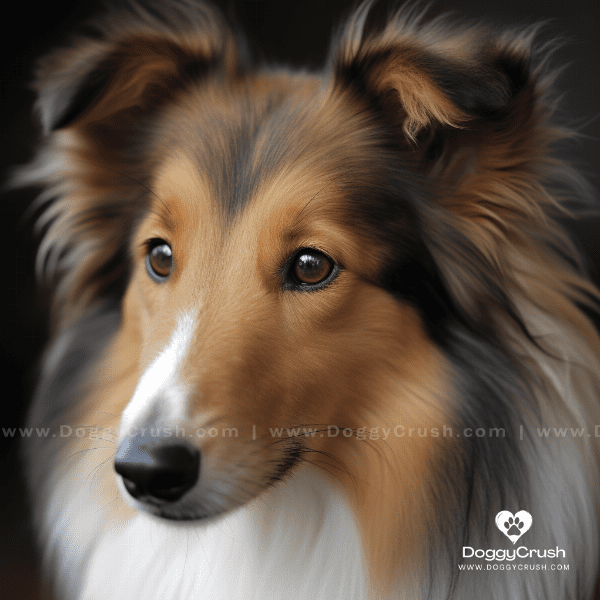
Temperament and Personality Traits of Shetland Sheepdogs
Shetland Sheepdogs are known for their friendly, loyal, and affectionate nature. They are intelligent and highly trainable, making them a great choice for families and individuals who want an obedient and responsive companion.
Intelligent and Trainable
Shetland Sheepdogs are highly intelligent and excel in obedience and agility training. They are eager to please and respond well to positive reinforcement training methods. They are also quick learners and can pick up new commands and tricks with ease.
Strong Herding Instinct
As a herding breed, Shetland Sheepdogs have a strong instinct to herd and may exhibit herding behavior, such as nipping or chasing. This behavior can be minimized with proper training and socialization, but it is important to be aware of this trait when considering the breed.
Alert and Vocal
Shetland Sheepdogs are known for their alert and vocal nature. They will bark to alert their owners of any perceived danger or intruders, making them good watchdogs. However, their vocal nature can also be a potential issue in apartment or shared living situations.
In conclusion, the Shetland Sheepdog is a friendly, loyal, and intelligent breed that makes a great companion for families and individuals. While they do have a strong herding instinct and can be vocal, with proper training and socialization, they can be a well-behaved and obedient addition to any household.

Training and Exercise Needs of Shetland Sheepdogs
Positive Reinforcement Training
Shetland Sheepdogs are highly intelligent and respond well to positive reinforcement training methods. Using treats, praise, and rewards can help to motivate and reinforce desired behaviors. However, it is important to avoid harsh or punitive training methods, as this can cause anxiety and fear in the dog.
Socialization
Socialization is an important part of any dog’s training and is especially important for Shetland Sheepdogs. Early and ongoing socialization can help to minimize any potential aggression or anxiety around other people or animals. It is important to expose your Sheltie to a variety of people, animals, and environments in a positive and controlled manner.
Mental Stimulation
In addition to physical exercise, Shetland Sheepdogs require mental stimulation to stay happy and healthy. They enjoy learning new commands and tricks and participating in activities like obedience and agility training. Puzzle toys and interactive games can also provide mental stimulation for your Sheltie.
Consistency
Consistency is key when it comes to training and exercise for Shetland Sheepdogs. It is important to establish a routine and stick to it to help your Sheltie learn and understand what is expected of them. This can help to minimize any potential behavior issues and create a well-behaved and obedient companion.
In conclusion, Shetland Sheepdogs are a highly trainable and active breed that require regular exercise and mental stimulation to stay healthy and happy. Positive reinforcement training methods, socialization, exercise, and mental stimulation are all important components of a well-rounded training and exercise plan for your Sheltie.
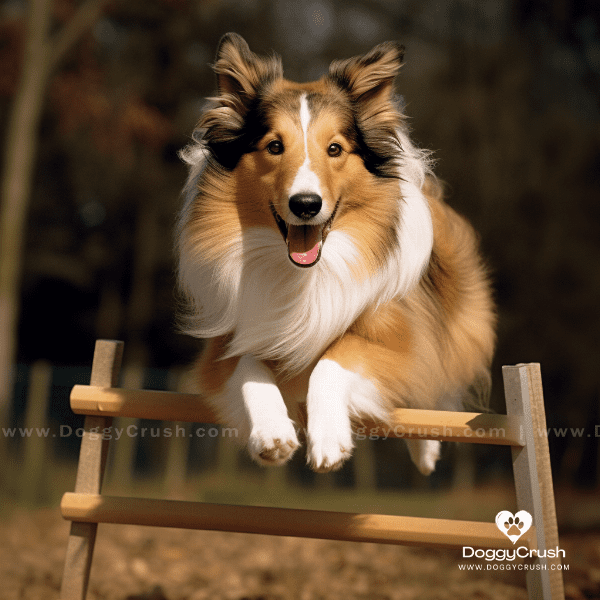
Common Health Issues in Shetland Sheepdogs
Like all breeds, Shetland Sheepdogs are prone to certain health issues. While some of these issues may be genetic, others may be environmental or related to lifestyle factors. Here are some of the most common health issues that Shelties may face.
Hip Dysplasia
Hip dysplasia is a common genetic condition in many Dog breeds, including Shetland Sheepdogs. It is caused by abnormal development of the hip joint, which can result in pain and lameness. While hip dysplasia is a hereditary condition, it can also be exacerbated by factors such as obesity and overexertion.
Eye Problems
Shetland Sheepdogs are prone to several eye problems, including progressive retinal atrophy (PRA), cataracts, and collie eye anomaly. These conditions can cause vision loss and may require surgical intervention or lifelong management.
Von Willebrand’s Disease
Von Willebrand’s Disease is a bleeding disorder that is common in several dog breeds, including Shetland Sheepdogs. It is caused by a deficiency in the protein that is necessary for normal blood clotting. Dogs with Von Willebrand’s Disease may bleed excessively from minor injuries or during surgical procedures.
Allergies
Shetland Sheepdogs are prone to several types of allergies, including food allergies, environmental allergies, and flea allergies. These allergies can cause skin irritation, itching, and discomfort, and may require treatment with medications or dietary changes.
Dental Issues
Like many small breed dogs, Shetland Sheepdogs are prone to dental issues such as gum disease and tooth decay. Regular dental care, including teeth brushing and professional cleanings, is important to maintain good oral health.
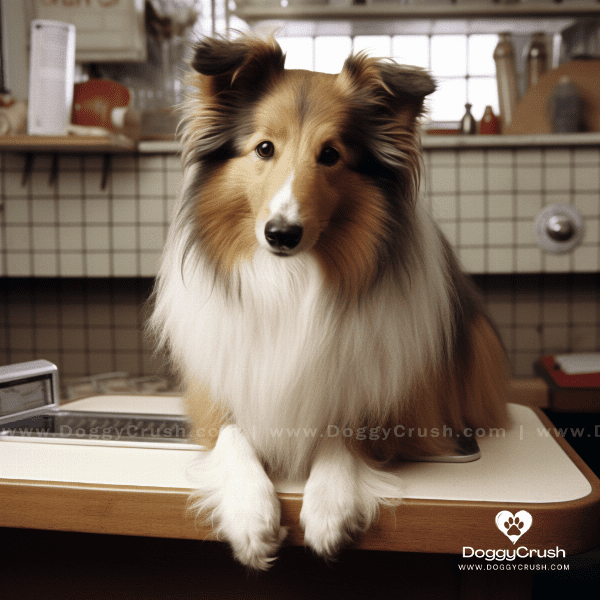
Grooming and Coat Care for Shetland Sheepdogs
Shetland Sheepdogs are known for their beautiful, thick coats. However, this means that they require regular grooming and coat care to keep their fur healthy and tangle-free. Here are some important things to consider when it comes to grooming and coat care for your Sheltie.
Brushing
Shetland Sheepdogs require regular brushing to keep their coat healthy and free from tangles. A slicker brush and a metal comb are recommended for grooming, and you should brush your Sheltie at least once a week. Regular brushing can also help to distribute natural oils throughout the coat and keep it looking shiny and healthy.
Bathing
Shetland Sheepdogs do not require frequent bathing, as this can strip their coat of its natural oils. However, they should be bathed occasionally, particularly if they get particularly dirty or smelly. Use a gentle, dog-specific shampoo and rinse thoroughly to avoid any residue that may cause skin irritation.
Coat Trimming
Some Shetland Sheepdog owners choose to trim their dog’s coat to keep it neat and manageable. However, it is important to note that trimming can affect the texture of the coat and may not be necessary if your dog’s coat is healthy and well-groomed.
Nail Care
Regular nail care is important for Shetland Sheepdogs, as overgrown nails can cause discomfort and even affect the dog’s gait. Nail trimming should be done every few weeks, and you should take care not to cut the quick (the blood vessel inside the nail).
Dental Care
Good dental care is important for all breeds, including Shetland Sheepdogs. Regular teeth brushing and professional cleanings can help to prevent gum disease and tooth decay.
In conclusion, Shetland Sheepdogs require regular grooming and coat care to keep their beautiful coats healthy and tangle-free. Regular brushing, occasional bathing, nail care, and dental care are all important components of a good grooming and coat care routine for your Sheltie. By taking good care of your dog’s coat, you can help to ensure that they look and feel their best.
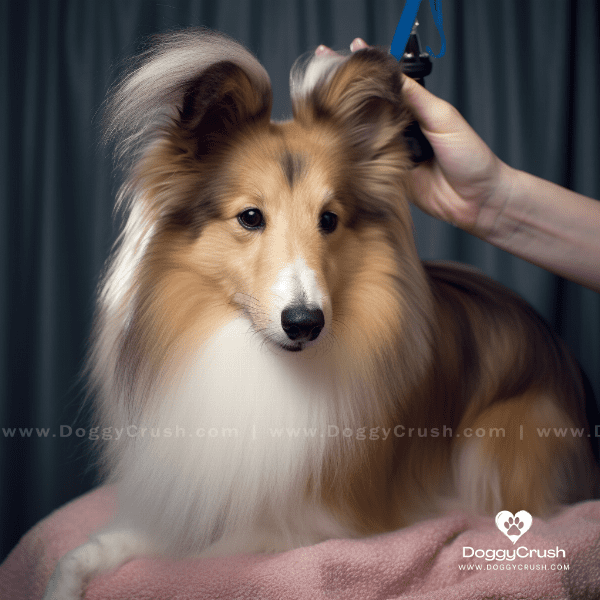
Living with a Shetland Sheepdog: What to Expect
Exercise and Mental Stimulation
Shetland Sheepdogs are an active breed that require regular exercise and mental stimulation to stay healthy and happy. Daily walks and playtime in a securely fenced yard are recommended. They also enjoy playing games like fetch and agility training. It is important to provide your Sheltie with enough exercise and mental stimulation to prevent boredom and destructive behavior.
Grooming and Coat Care
Shetland Sheepdogs have a thick and beautiful coat that requires regular grooming and coat care. Weekly brushing, occasional bathing, and nail care are all important components of a good grooming routine. It is important to be prepared for the time and effort that it takes to keep your Sheltie’s coat healthy and tangle-free.
Training and Socialization
Shetland Sheepdogs are highly intelligent and trainable, but they require positive reinforcement training methods and ongoing socialization to prevent behavior issues. Early socialization and ongoing training can help to minimize any potential aggression or anxiety around other people or animals.
Health Issues
Like all breeds, Shetland Sheepdogs are prone to certain health issues, including hip dysplasia, eye problems, and von Willebrand’s disease. It is important to work with a reputable breeder who performs health screenings on their breeding dogs to minimize the risk of these issues. Regular veterinary checkups and good nutrition can also help to keep your Sheltie healthy and happy.
Affectionate Nature
One of the most appealing things about Shetland Sheepdogs is their affectionate and loyal nature. They thrive on human interaction and love to be part of the family. They are known to follow their owners around the house and will often seek out physical contact, such as cuddling or sitting on laps.
In conclusion, living with a Shetland Sheepdog can be a rewarding experience for families and individuals who are looking for an intelligent, affectionate, and trainable companion. With proper exercise, grooming and coat care, training and socialization, and good health care, your Sheltie can be a well-behaved and beloved member of your household.
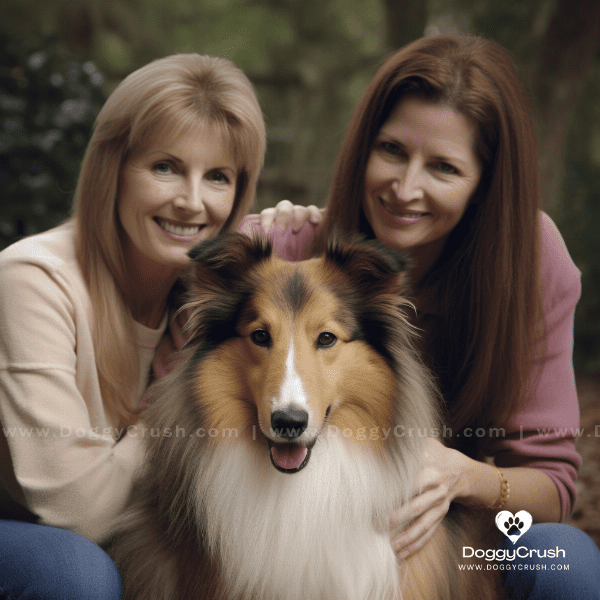
Shetland Sheepdogs as Family Pets
Shetland Sheepdogs are a popular breed for families who are looking for an affectionate and loyal companion. Here are some important things to consider when it comes to Shelties as family pets.
Affectionate and Loyal Nature
Shetland Sheepdogs are known for their affectionate and loyal nature, making them great family pets. They enjoy being around their owners and will often seek out physical contact, such as cuddling or sitting on laps. They are also protective of their family and will alert their owners to any perceived danger or intruders.
Good with Children
Shetland Sheepdogs are generally good with children and make great playmates for kids. They are patient and gentle with children and will often take on a protective role. However, as with all dogs, it is important to supervise interactions between children and dogs to prevent any potential accidents.
Good with Other Pets
Shetland Sheepdogs are generally good with other pets, particularly if they are socialized with them from a young age. They can coexist peacefully with other dogs, cats, and even small pets like guinea pigs and rabbits.
Trainable and Obedient
Shetland Sheepdogs are highly trainable and responsive to positive reinforcement training methods. They are intelligent and eager to please their owners, making them easy to train and obedient.
Exercise and Grooming Needs
Shetland Sheepdogs require regular exercise and grooming to stay healthy and happy. Daily walks, playtime in a securely fenced yard, and mental stimulation are important components of their exercise routine. Weekly brushing, occasional bathing, and nail care are also important for keeping their coat healthy and tangle-free.
In conclusion, Shetland Sheepdogs make great family pets for those who are looking for an affectionate, loyal, and trainable companion. They are good with children and other pets, easy to train and obedient, and require regular exercise and grooming to stay healthy and happy. If you are considering adding a Sheltie to your family, be sure to work with a reputable breeder and provide your dog with plenty of love, attention, and care.
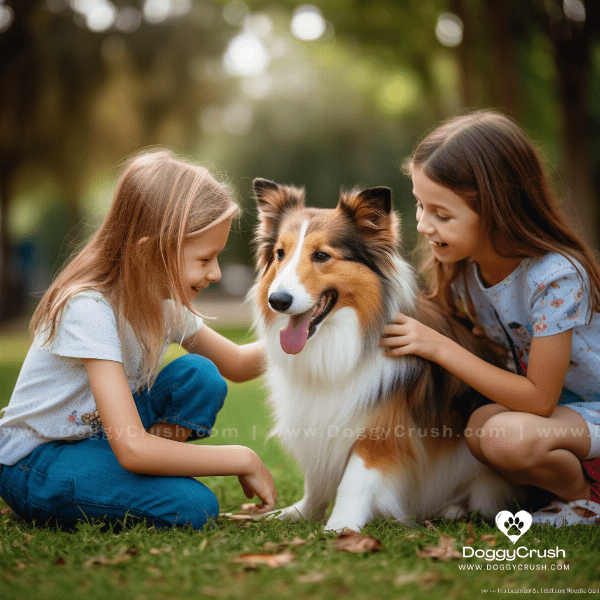
Shetland Sheepdogs in Show and Performance
Shetland Sheepdogs are a popular breed for dog shows and performance events due to their intelligence, trainability, and beautiful coats. Here are some important things to consider when it comes to Shelties in show and performance.
Conformation Shows
Shetland Sheepdogs can compete in conformation shows, which are events that judge dogs based on how well they conform to breed standards. Judges evaluate the dog’s structure, movement, and overall appearance. Shelties are known for their beautiful and distinctive coat, which is a key feature in conformation shows.
Agility Events
Shetland Sheepdogs are also known for their agility and athleticism, making them great competitors in agility events. In agility events, dogs navigate a course of obstacles, including jumps, tunnels, and weave poles, in a set amount of time. Shelties excel in agility events due to their intelligence, trainability, and natural athleticism.
Obedience Competitions
Shetland Sheepdogs are also successful competitors in obedience competitions. In obedience competitions, dogs are judged based on their ability to follow commands and perform a set of exercises, such as heeling, sitting, and retrieving. Shelties are known for their obedience and willingness to please their owners, making them a great choice for obedience competitions.
Herding Trials
While Shetland Sheepdogs were originally bred as herding dogs, they are not typically used for herding trials in the same way that other herding breeds like Border Collies are. However, some Shelties may still enjoy participating in herding trials and may excel in events that test their herding instincts.
In conclusion, Shetland Sheepdogs are a popular breed for dog shows and performance events due to their intelligence, trainability, and beautiful coats. They can compete in conformation shows, agility events, obedience competitions, and even herding trials. If you are interested in participating in dog shows or performance events with your Sheltie, be sure to work with a reputable trainer and provide your dog with plenty of training and socialization.
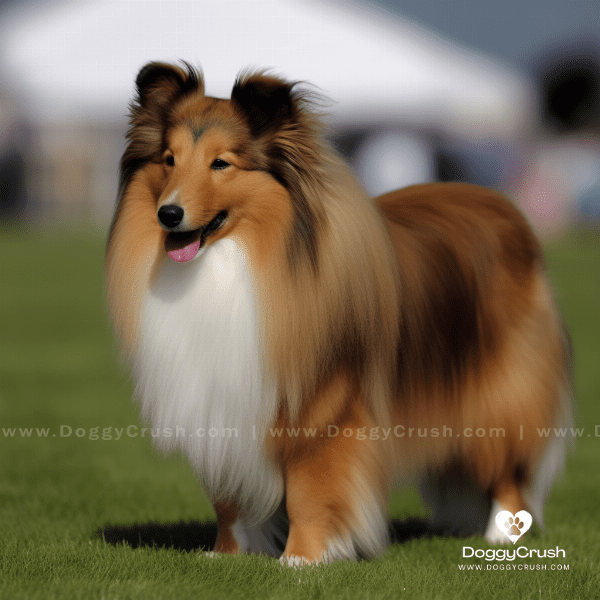
Finding and Choosing a Shetland Sheepdog Puppy or Rescue Dog
If you have decided that a Shetland Sheepdog is the right breed for you, there are a few things to consider when finding and choosing a puppy or rescue dog.
Finding a Reputable Breeder
It is important to work with a reputable breeder who performs health screenings on their breeding dogs to minimize the risk of genetic health issues. Look for a breeder who is knowledgeable about the breed, has a clean and well-maintained facility, and is willing to answer your questions about their breeding program.
Choosing a Puppy
When choosing a Shetland Sheepdog puppy, look for a puppy that is friendly, playful, and confident. Avoid puppies that appear timid, shy, or overly aggressive. It is also important to observe the puppy’s parents, as their temperament and personality traits may give you an idea of what to expect from your puppy as they grow up.
Adopting a Rescue Dog
If you are interested in adopting a Shetland Sheepdog rescue dog, look for a reputable rescue organization that is committed to the breed. Ask questions about the dog’s history, including their behavior and health issues. It is also important to be prepared to work with the dog’s previous training and socialization, and to provide them with the care and attention they need to adjust to their new home.
Health and Temperament Considerations
When choosing a Shetland Sheepdog puppy or rescue dog, it is important to consider their health and temperament. Look for a dog that is healthy, with clear eyes, clean ears, and a shiny coat. Observe their behavior and temperament, looking for a dog that is friendly, playful, and responsive.
Training and Socialization Needs
Regardless of whether you choose a puppy or rescue dog, it is important to provide your Shetland Sheepdog with proper training and socialization to prevent behavior issues. Positive reinforcement training methods and early socialization can help to ensure that your dog is well-behaved and obedient.
In conclusion, finding and choosing a Shetland Sheepdog puppy or rescue dog requires careful consideration of their health, temperament, training and socialization needs. Working with a reputable breeder or rescue organization and taking the time to choose the right dog for your family can help to ensure that you have a happy and healthy companion for years to come.
